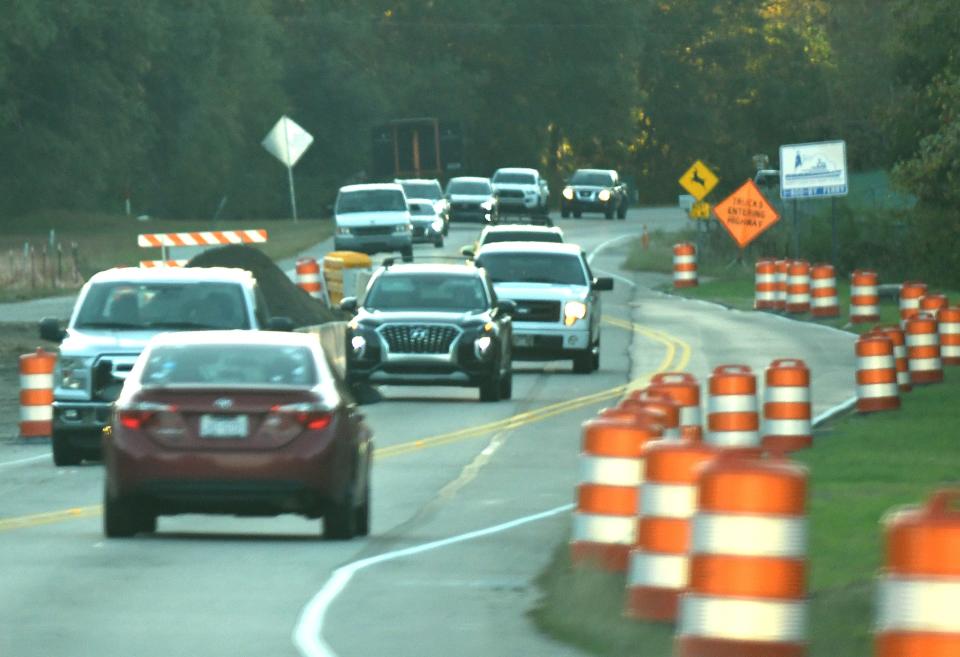Brunswick County adds new wrinkle in development approval process. Here's how it'll work.
The process for approving new development in Brunswick County is changing slightly.
Following an increase in concerns from residents regarding the impact of residential development on the county, the Brunswick County Board of Commissioners unanimously decided to change one step of the development approval process.
Previously, conceptual plans for residential developments were considered and approved or denied by the county’s planning board ahead of several other required approvals, including a traffic impact analysis by the North Carolina Department of Transportation.
Now the analysis will be required beforehand, which will allow the planning board and community to have a better understanding of the potential impacts of a development.
Here’s how the small change will impact development in growing Brunswick County.
What is a traffic impact analysis?

In North Carolina, counties cannot own or maintain roadways. Instead, roads are owned and maintained by NCDOT or local municipalities, or they are privately owned and maintained, such as roads in a planned development community.
The county does use traffic impact analyses in its development planning process, but it does not have jurisdiction over the roads that may be impacted.
Scott James, transportation planning engineer with the Wilmington Urban Area Metropolitan Planning Organization, said a traffic impact analysis is a tool that can be required to allow governing bodies to understand a potential development.
A traffic impact analysis is required in Brunswick County for any development estimated to generate 100 peak hour vehicle trips or 1,000 daily vehicle trips. The analysis estimates the development’s size, identifies streets and intersections that are most likely to be impacted by additional traffic and to analyze that potential impact.
James said the analysis is statistical and based on years of observation.
Once the scope, scale, impact and consequences of a development are identified by the WMPO, NCDOT and developer, a conditional approval is issued. That approval, James said, identifies points when a developer will be required to mitigate the consequences of their development.
For example, if added traffic from a development will impact an intersection, there would be a point where the developer would be required to mitigate that impact, perhaps by adding an additional turning lane or a traffic signal.
“We try not to have a development worsen a future condition without also providing some mitigation measure,” James said.
More: From voting to land use, here's how the Brunswick County Planning Board works
How is development currently approved in Brunswick County?
Currently, a proposed development is brought before the Brunswick County Planning Board for approval or denial prior to a traffic impact analysis.
Before the planning board reviews the application, the county’s planning staff typically meets with the project applicant and discusses the project, the county’s technical review committee reviews the project and voices any potential concerns, and planning staff makes a recommendation that the planning board approve or deny the application.
The approval of the planning board is not an authorization to construct. The project must also obtain all necessary federal, state and county approvals and permits prior to construction, including a traffic impact analysis.
How is the process changing?
Now, a traffic impact analysis will be required for proposed developments identified with 200 or more peak hour trips ahead of the planning board’s consideration.
What does it mean?
The move will allow the planning board to have additional information ahead of approving or denying a project. However, if a traffic impact analysis is required for a development, it would need to be conducted and approved ahead of construction – whether that happened before or after planning board approval.
The change will also allow members of the public to better understand the potential traffic impacts of a potential development and what mitigation measures may be required by the developer ahead of the project’s approval.
STAY CONNECTED: Keep up with the area’s latest Brunswick County news by signing up for the Brunswick Today newsletter and following us on Facebook and Instagram.
The change will be formalized in an amendment to the county’s ordinances in a future meeting, according to a news release from the county. The board of commissioners next meets on April 15.
Jamey Cross covers Brunswick County for the StarNews. Reach her at jbcross@gannett.com or message her on Twitter/X @jameybcross.
This article originally appeared on Wilmington StarNews: Brunswick County, NC adjusting development approval process

